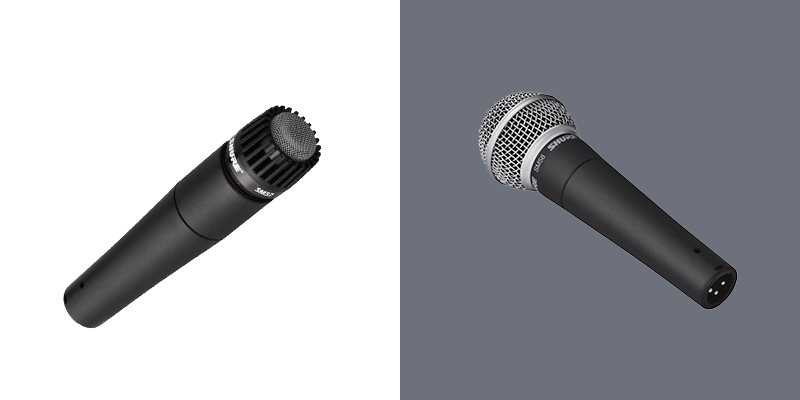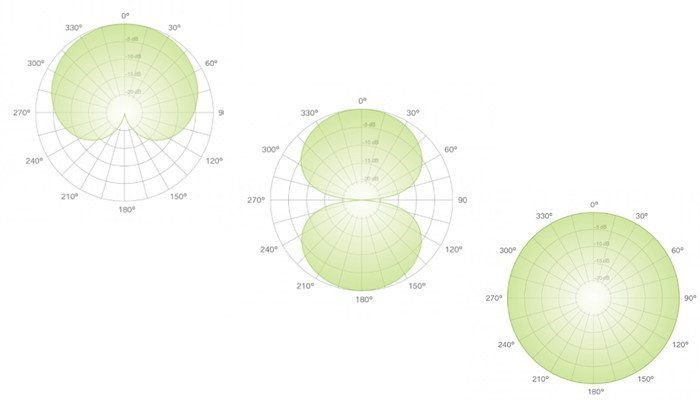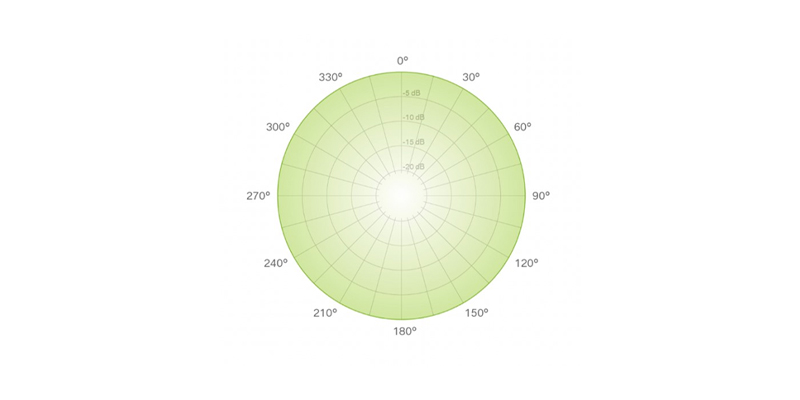
Regardless of the audio field you’re working in, whether it’s podcasting or ambient recordings, you need to understand how to improve the audio quality of a recording and how microphones pick up sound. There’s no way around it: a great microphone can transform amateur recordings into professional audio.
This is why today we’ll spend some time highlighting the difference between omnidirectional and unidirectional microphones and defining which ones are the best for your specific needs.

Did you know all microphones have microphone pickup patterns? The mic’s pickup pattern defines how sensible the mic is when capturing sounds from each side. Microphones can capture sound from everywhere around them, from two sides or just one, while being less sensitive to sound coming from sources outside their range.
While there are several pickup pattern options, today we’ll analyze the properties and polar patterns of unidirectional and omnidirectional microphones, the most common patterns for a recording microphone.

A unidirectional microphone also called a directional microphone, has a cardioid polar pattern. The polar pattern of directional microphones is represented by a heart-shaped form because it can pick up sound widely from the front side, less from the left and right sides, and minimizes sound from the back of the microphone.
The cardioid mic pattern of a unidirectional mic can be super-cardioid or hyper-cardioid, which gives a narrower pick-up on the front but offers a bit more sensitivity in the back and a lot less from the sides. When choosing the cardioid mic of a unidirectional mic, ensure you’re choosing the best cardioid pattern for your needs.
You should use a unidirectional microphone to capture a direct sound coming from the front side and avoid all other background sounds. That’s why a unidirectional microphone is good for untreated rooms because you don’t have to worry about the mic picking up noises other than the primary source.
A unidirectional microphone is also a good choice for outdoor recordings, to record a voice, a specific sound with more clarity, and low noises thanks to the proximity effect. However, be careful because unidirectional microphones are susceptible to pops and wind noise, so a windshield or pop filter is recommended to make the most of a directional microphone
Great with room noise isolation.
Better proximity effect.
Avoids sound leakage.
Captures bass and low frequencies better.
Struggles with wind, pop sounds, and distortion.
Hard to record a moving target.
You need to be careful with mic placement.

Unlike unidirectional mics, an omnidirectional microphone records the source sound from all sides. It doesn’t matter how you place the microphone; it will sound equally well from the front or the rear side as long as it’s close to the sound source.
The polar pattern of an omni mic has a circular form. It means it’s sensitive from any direction and does not attenuate sounds from any angle. If you have a room with little treatment, an omnidirectional mic will pick up all the room noise, and your final recording will require a lot of noise reduction in post-production.
However, the advantage is that you can place the omnidirectional microphone in the center of a room, and it’ll capture everything that’s going on within that room. With ambient sounds, an omnidirectional microphone is the best option to capture ambient sounds, get the sound of a river but also the sound of insects and the grass and leaves moving by the wind.
An omnidirectional microphone, being sensitive from all sides, makes it challenging to hide background noises from recordings. But since they suffer less from the proximity effect than unidirectional microphones, they can handle wind, vibration noise, and plosive sounds better.
Other uses for an omnidirectional microphone include acoustic performances, choirs, stereo recording, concerts where you want to capture the audience and every detail for an immersive effect, and conferences.
Omnidirectional microphones capture sounds from different directions
You can place omnidirectional microphones in any position, and they will pick up sounds clearly from any direction.
Handles noisy wind, plosives, and vibration.
A better choice for recordings in nature and stereo recording.
The proximity effect is lower with omnidirectional mics.
No room isolation.
Picks up more unwanted noise, echo, and reverb.
All in all, a unidirectional microphone is better for capturing low frequencies thanks to the proximity effect. You will have more isolation from noises but might struggle with mic positioning and distortion. However, if you know how to avoid these issues, your voiceovers, podcast, and singing sessions will sound professional.
Choosing an omnidirectional microphone will allow you to place it upside down in a boom arm, right side up on a mic stand, and speak or play an instrument while walking around it. However, they’re much more likely to capture background noise.
Nowadays, it’s common to find condenser microphones with a multi-microphone setup selection to have even more control over your recording microphone: a good option if you’re working in different situations and don’t like moving around with multiple uni or omnidirectional mics.
If you prefer having a good unidirectional microphone for all circumstances, look for shotguns and dynamic microphones. For omnidirectional microphones, lavalier and condenser mics are the most popular options.
Good luck, and stay creative!